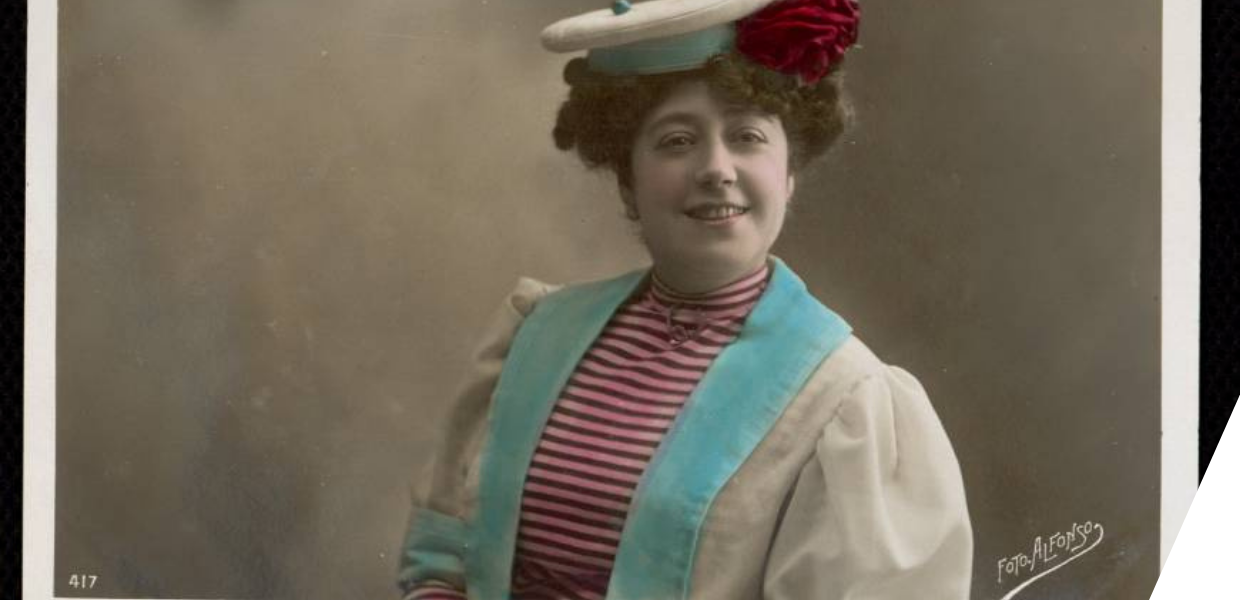Inspiring stories
For Women's History Month in 2022, 20 new stories were published on the Europeana website, in addition to the previously published editorials we promoted. In blogs, exhibitions and galleries, we told women's stories from the middle ages to the 20th century, featuring artists and performers, fashion, folk and craft as well as politicians and campaigners.
Working with partners based around Europe provided great opportunities to uncover new stories about women throughout the continent and beyond. Curated and created by six students at KU Leuven in Belgium, the Pill exhibition, telling the story of the birth control pill as a societal game changer in the twentieth century, was a highlight of the 2022 season.
Another example was a blog linking fashion and feminism by Laura Fiesoli from the Museo dil Tesutto di Prato and Marta Franceschini from the European Fashion Heritage Association, who worked together to create and publish 'women crafting freedom'. They put a spotlight on a remarkable collection of fabrics and textiles called the Antonia Suardi collection, unveiling how embroidery was used as a way for women to show independence, creativity, and partake in social discourse. The piece fits in the current Crafted project, which fosters the artisanship and intangible histories behind different kinds of craft work, and offers an example of editorial which explores histories that lie on the intersections between intangible heritage, women's history, and fashion.
We were also excited to be able to publish further guest editorials from institutions including CRDI Ajuntament de Girona, ERT Archives, the Forum Hungaricum, Canisius College in New York (from Johanna Fisher, Professor of English and Women Studies, Co-director Women and Gender Studies), Khalili Collections, Kulturpool, Museo de Historia de Madrid and Museo del Tessuto di Prato. You can explore the editorials on our Women’s History page.
Learning from institutions
Alongside stories on the Europeana website, on Europeana Pro we spoke to different projects and cultural heritage institutions to find out more about how they are highlighting women's history. In these pieces, we heard lots about how cultural heritage institutions can work to highlight women’s stories in their own collections.
Thea Aarbakke, Academic Director and curator of The Norwegian Women's Museum reflected on the importance of looking at known objects in a new light in order to highlight women’s contributions. She writes, ‘Women’s history is everywhere! But sometimes we have to ask new questions of the collection and museum objects to find it. For example, there can be more women’s history related to the use of objects, instead of their production, which is more often related to men. If the museum presents object stories about both use and production the collections become richer and more interesting.’ Read more.
Sinéad McCoole, Curator of Mná100 project which documents women in Irish history 100 years ago, reflected on the importance of making connections between women’s global history. ‘It is important to tell the story of women and their seminal part in this Decade of Centenaries by continuing to make connections with archives, museums and libraries worldwide who may have Irish material.’ Read more.
And more recently, the organisers of the ‘Being Women in the Time of Pandemic’ project at the National Library of Serbia have spoken of the importance of working to embed women’s history in narratives around collections, with Tamara Butigan advocating, ‘Open your institutions for women, listen to them, record their practices and preserve them as priceless collections for the coming generations. Make digital space for women’s history collections, create editorials, share on social networks to inspire others.’ Read more.
Get involved
If you want to continue to share inspiring stories from women’s history, now is the perfect time to get involved in Europeana’s Digital Storytelling Festival. Find out how to take part and submit your story to the competition.
If you need some ideas, explore the inspiring stories already available on Europeana’s Women’s History page and use the storytelling resources from the Digital Storytelling Festival.


